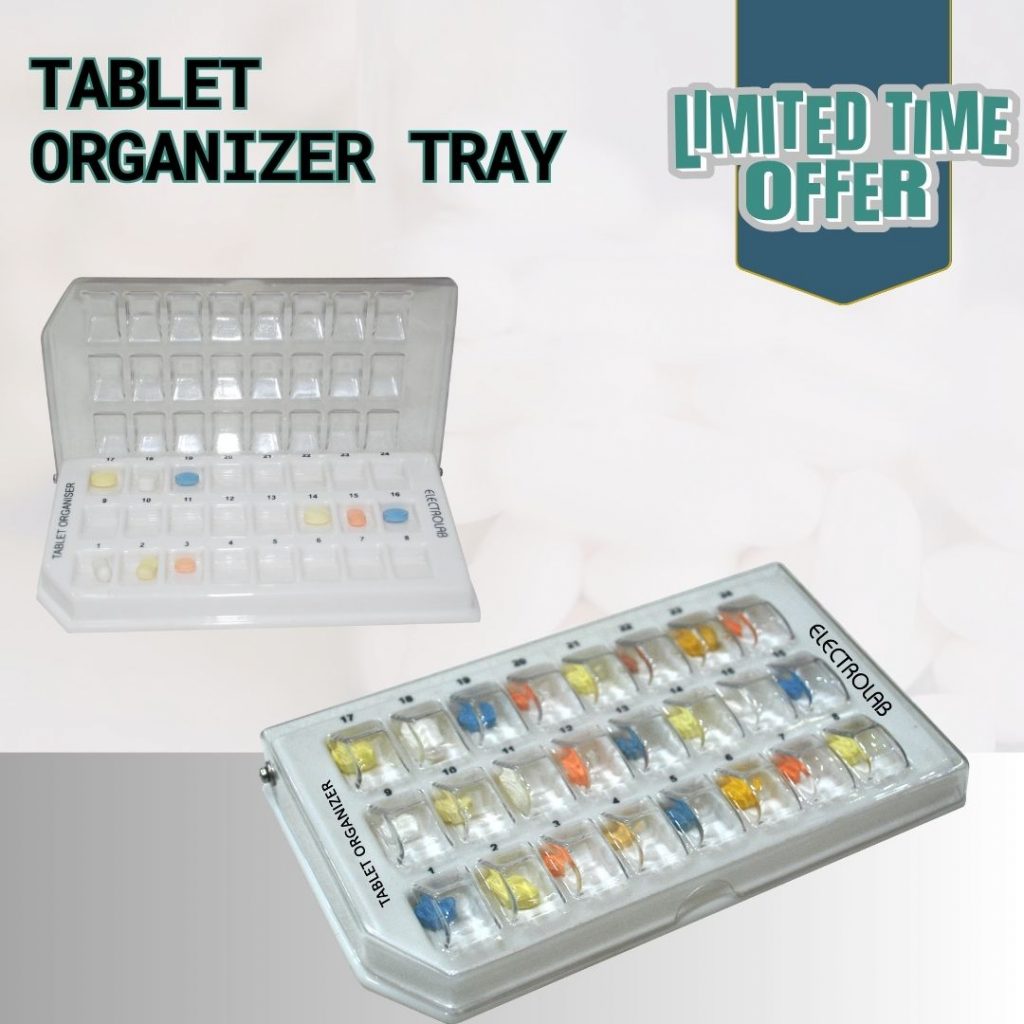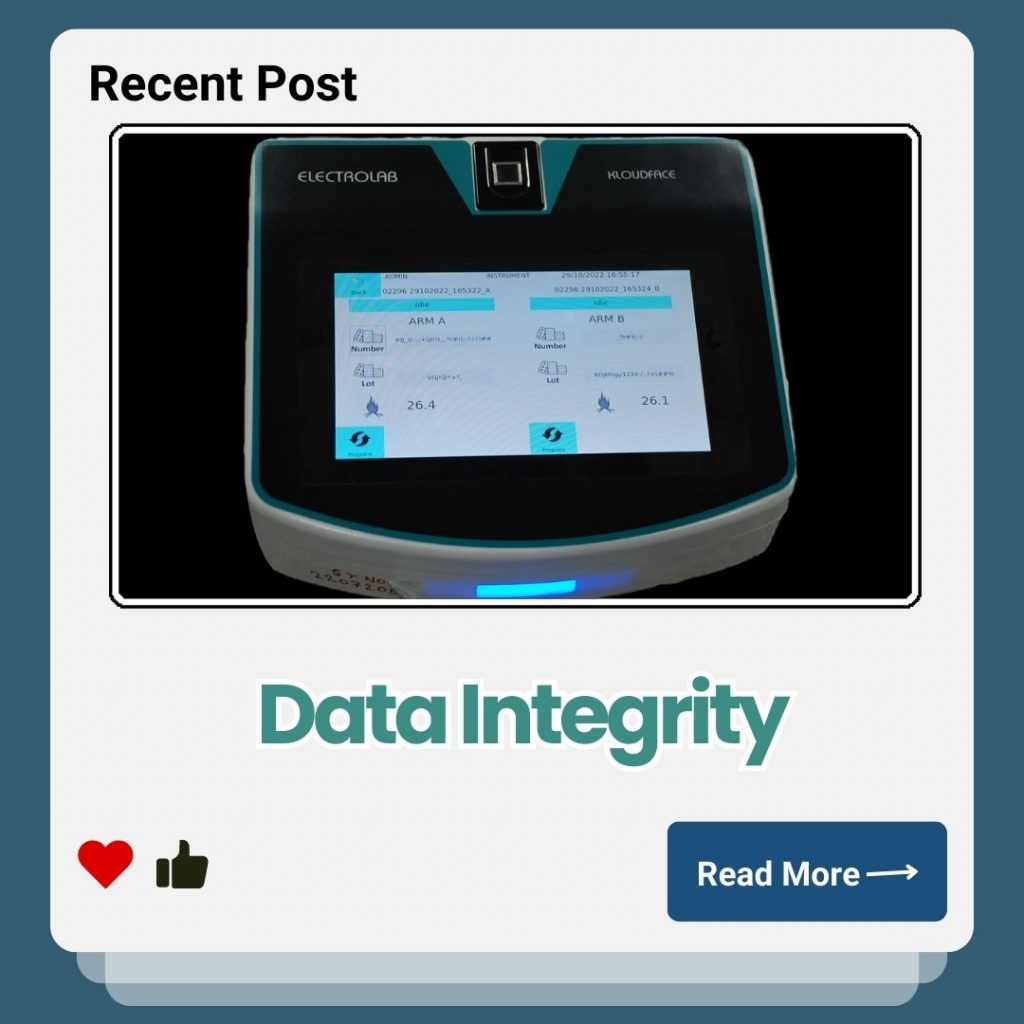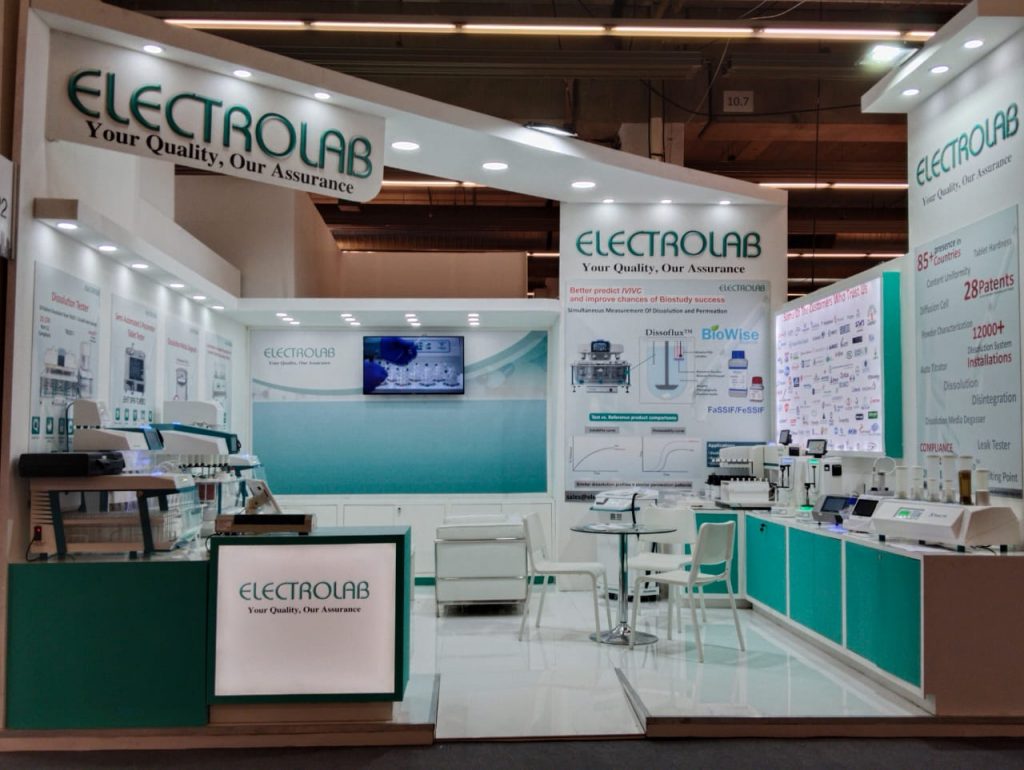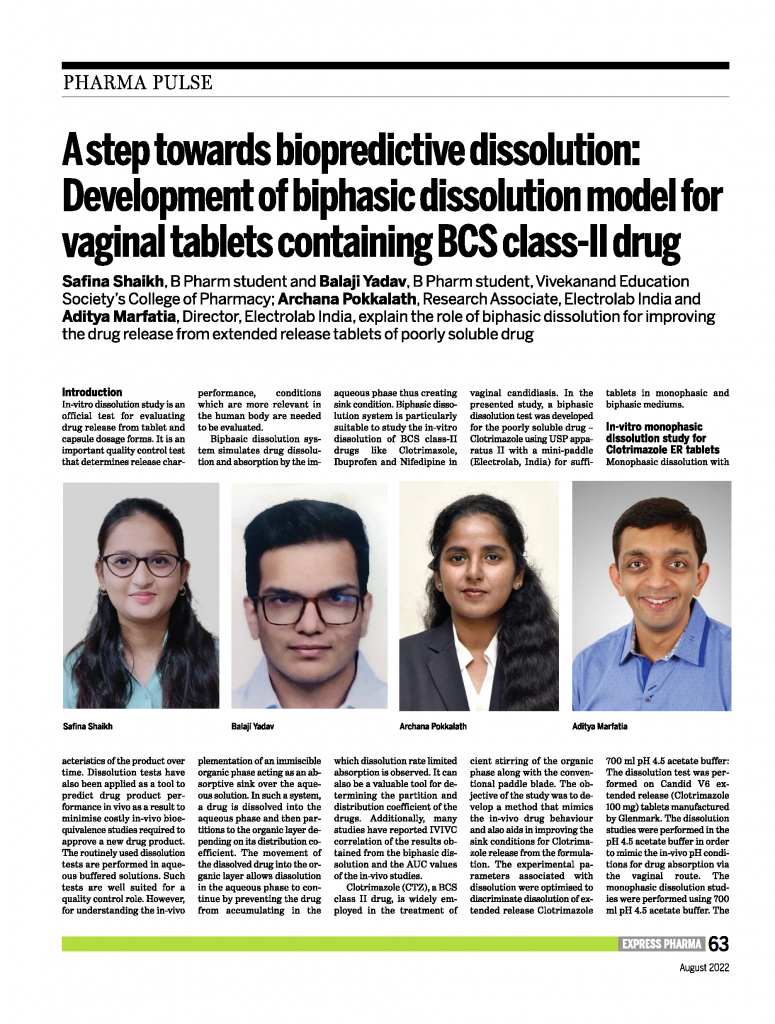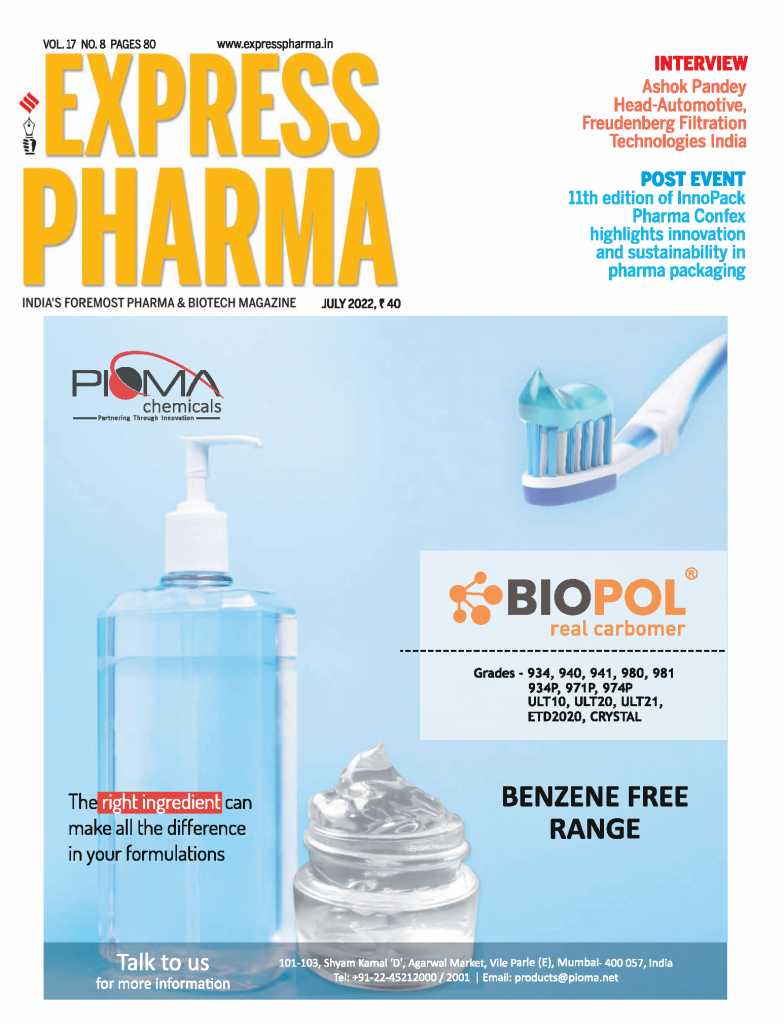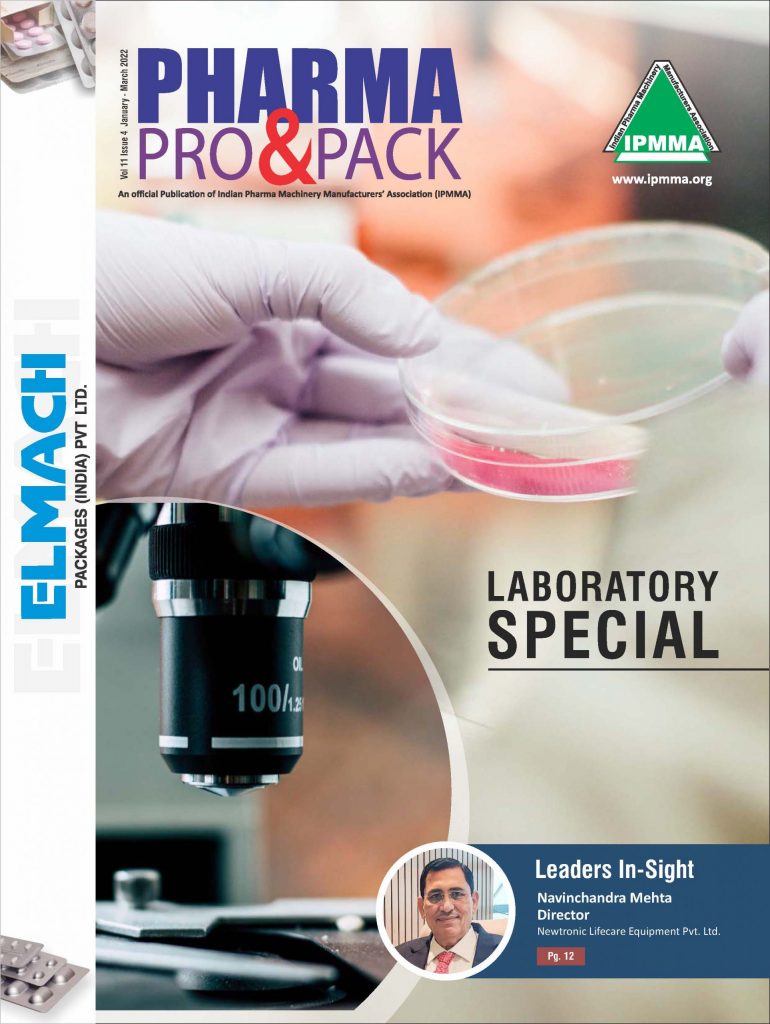Introduction & applications of Dissolution Test Apparatus
Dissolution testing is an analytical technique used in various industries to evaluate the rate and extend at which a drug (Solid Substance) dissolves in a liquid media under controlled environmental conditions.
It gives valuable information regarding substances such as API, excipients, binders, colors, flavors and chemicals. Dissolution testing helps in evaluating the release rate of API, Bio-availability and overall physical and chemical performance of a Formulation. In the pharmaceutical industry, dissolution testing ensures the quality, efficacy and safety of drug products.
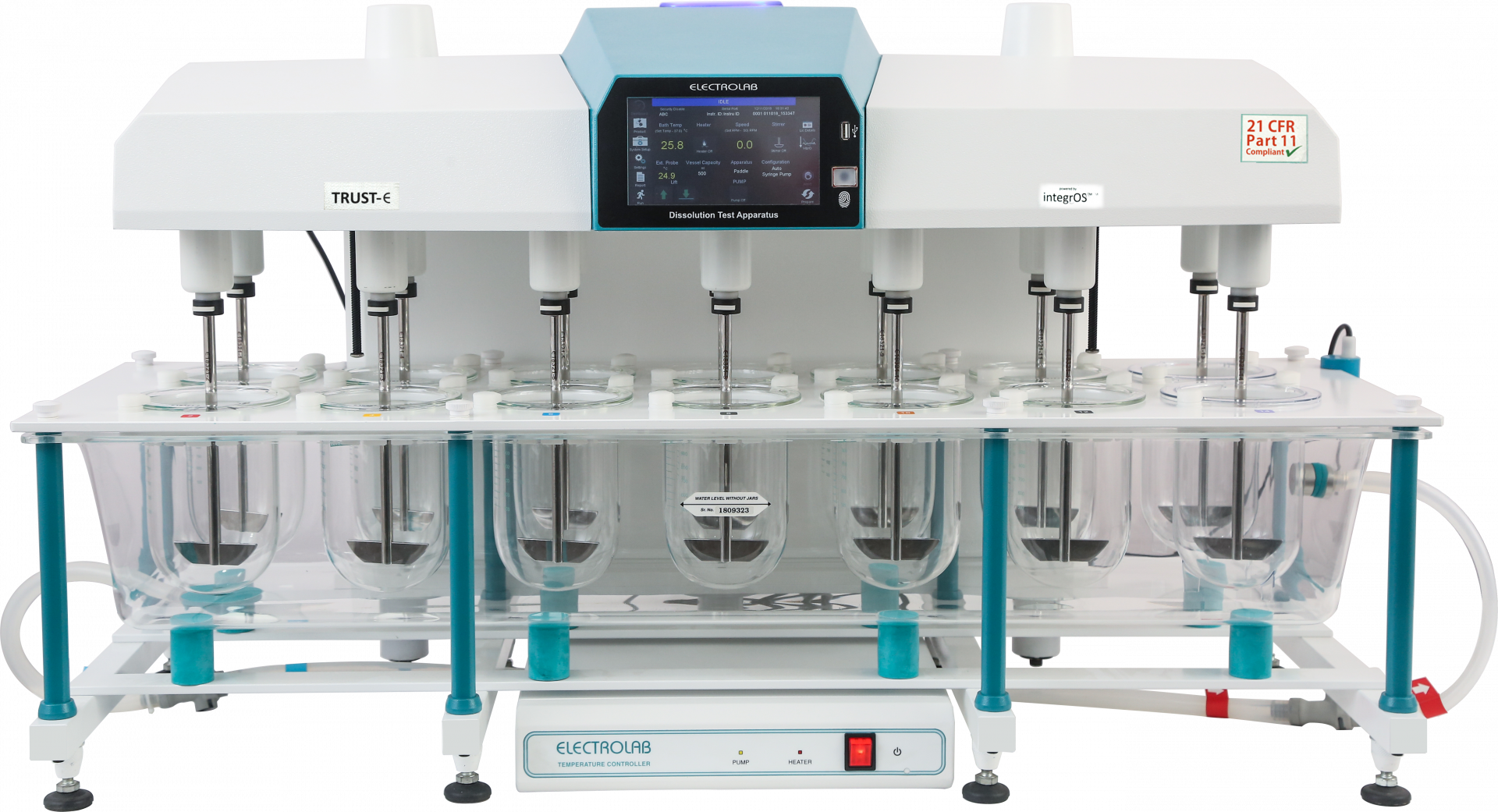
The dissolution process is a significant in different types of Industries such as Pharmaceuticals, Food and Beverages, Cosmetics, agrochemicals and environmental analysis.
Dissolution technique involves Solid substance to respective environmental conditions such as temperature, agitation, pH, RPM withing dissolution apparatus. Dissolution media should be resembling the physiological conditions of the intended use.
Samples should withdraw at the regular intervals and then it should be analysed to determine the concentration of the dissolved substances. Analytical Method such as UV-Vis Spectroscopy, High Performance Liquid Chromatography can be used to determine concentration of dissolved substances in liquid medium.
Dissolution testing helpful to product development which ensure batch-to-batch consistency, to evaluate stability of the product and to meet regulatory requirement. Overall, Dissolution testing is a critical tool used across the different industries to understand behaviour of API (Active Pharmaceutical Ingredients). It gives valuable insights such as rate and extend of release, Bioavailability and performance of formulations and Quality Control.
Application Of Dissolution Testing In Different Industries
It is used to determine release rate of active pharmaceutical ingredients (APIs) from formulation such as tablets, capsule, suspensions.
Dissolution testing is used to determine solubility and dissolution kinetics of chemicals and compounds, ensuring they are dissolve properly in specific solvents for various applications.
Dissolution testing is used in cosmetic industry to evaluate release rate and availability of API from creams, Lotion and other topical formulations.
It is used to determine release rate of actives, such as flavours, colours, nutrients and other semi solid food products.
It is help to access the rate of dissolution of active substances from Pesticides formulation such as granules, powders etc.
Dissolution testing is applied in environmental industry to determine the release and leaching of contaminants from solid materials such as soils, waste materials.
Types of Dissolution Tester
USP has given following methods of Dissolution Testing
Dissolution Test Apparatus 1 (Basket Apparatus): This type of apparatus is suitable for solid oral dosage form (Tablets/capsules) where formulation kept in basket and immersed in a liquid medium and % drug release can be determined. The Agitation method used in basket instrument is Rotating stirrer.
Dissolution Test Apparatus 2 (Paddle Apparatus): USP Dissolution Apparatus Type II is widely used in the Pharmaceutical Industry for routine dissolution testing of solid oral dosage forms. It provides valuable information about the drug’s release characteristics, helps to ensure product performance and quality control and is an essential part of regulatory compliance.
Dissolution Test Apparatus 3 (Reciprocating Cylinder): USP Dissolution Apparatus Type III, also known as the reciprocating cylinder apparatus, is primarily used for testing extended-release or sustained release solid oral dosage forms.
USP Dissolution apparatus Type III is an important tool for evaluating the performance and quality of extended release or sustained-release oral dosage forms. By simulating the movement and fluid dynamics encountered in the gastrointestinal tract, it provides valuable information on drug release characteristics, allowing for the assessment of the dosage form’s ability to deliver the drug release over an extended period.
Dissolution Test Apparatus 4 (Flow through Cell): Flow through cell (Type IV) is mainly used for formulation which are poorly soluble or insoluble in water, also used for testing of solid oral dosage forms, particularly those with modified-release or extended-release characteristics.
The flow through cell apparatus offers advantages for testing modified release or extended-release dosage forms by allowing continuous flow of the dissolution medium through dosage form. This setup better simulates the dynamic fluid environment encountered in the gastrointestinal tract, providing valuable insights into the drug release characteristics and performance of the dosage form.
Dissolution Test Apparatus 5 (Paddle Over Disk): This type of dissolution tester is useful to determine % Drug release from Transdermal patches or other delivery system that release the drug through a membrane. This apparatus serves as a valuable tool for evaluating the release characteristics. It supports formulation development, QC, Regulatory compliance and research in the field of transdermal patches drug delivery system.
Dissolution Test Apparatus 6 (Rotating Cylinder): USP dissolution apparatus 6, the rotating cylinder apparatus, is particularly useful for evaluating drug release from extended drug release or sustained release solid oral dosage forms. It allows for the simulation of in Vivo conditions by creating a reciprocating motion, providing insights into the dissolution behaviour and release characteristics of the dosage form.
Dissolution Test Apparatus 7 (Rotating Holder): USP Dissolution Apparatus Type VII, or the Reciprocating Holder, is a specialized apparatus used for testing tablets and capsules in the pharmaceutical industry. It is designed to mimic the reciprocating or oscillating movement of the gastrointestinal tract during digestion.
It is useful for assessing the release and dissolution characteristic of tablets and capsules under conditions that mimic the in vivo environment.
Calibration And Validation Of Dissolution Apparatus
Why is calibration performed?
To confirm the suitability of the equipment and proper operation of the apparatus.
How is calibration performed?
Mechanical Calibration is performed for verification of physical parameter. Followed the mechanical calibration, the chemical calibration is performed for apparatus suitability test.
Component Conformance: The dimensions of the baskets, paddles and vessels should conform to the dimensional requirements mentioned in the USP dissolution chapter <711>. Use a vernier calliper to determine deviation (0.5 mm deviation over 37 mm height is about 1 degree).
Basket and Paddle Depth: The vertical position of the paddle or basket affects the hydrodynamic inside the vessel. Each paddle or basket should be individually adjusted to the pharmacopeia distance of 2.5 ± 0.2 cm using the height gauges. For information of height gauges.
Shaft Wobble: The shaft should run smoothly without significant wobble. An unusual wobble in a particular vessel can alter the fluid pattern. The eccentricity of the stirring element is measured using a wobble meter or micrometer. Deviation should be less than 1 mm in the dial indicator when slow rotated through 360°. For more information about the wobble meter.
Paddle/Basket Shaft Verticality: The verticality of the shaft is found using a digital protractor. It is determined by measuring its orientation at two positions spaced 90 degrees apart along the vessel’s axis. The deviation should be no more than 0.5° from 90.0° for this measurement. For more information about the digital protractor.
Basket Wobble: Use a dial test indicator to measure the wobble of each of the basket stirring elements with the dial test indicator probe tip at the bottom basket rim. Perform the total wobble measurement with the stirring element installed and slowly rotating through 360°. Total deflection of the probe tip must be less than 1.0 mm. If you are looking for the wobble meter or the entire validation kit.
Vessel Verticality: You can use a digital protractor measure the verticality of the vessels. The measurement is performed on the inner surface of vessel in two positions oriented at 90.0°. The deviation should be no more than 0.5° from 90.0°. For more information about the digital protractor, click hereDetermine the centering of the stirring element shaft within the vessel for each position. Centering of vessel is determined using a centering gauge for each position. The centering with respect to the cylindrical vessel not more than 2 cm below the vessel flange. The difference between the largest and smallest observed readings should not be greater than 2.0 mm for 360° rotation.
Base plate and Top Plate Inclination: The inclination of the platform on which the dissolution apparatus is placed should be sturdy, levelled and provide a high inertial mass to limit vibration. Base plate inclination is not more than 0.5° in each of two orthogonal directions. Use a protractor to measure the bench top and top plate inclination. For more information of digital protractor.
Rotation Speed: The stirring rate of the stirring element (e.g.: paddle, basket) would affect the hydrodynamics inside the vessel. The rotation speed or rotations per minute (rpm) can be checked by using a digital tachometer at 50 rpm and 100 rpm. The measured rpm can have a tolerance limit of ± 1 rpm from the set value. If you are looking for a digital tachometer.
Temperature of the dissolution media: Temperature in each vessel of the dissolution apparatus should be constant and within the limits to prevent effect of temperature in variation in results. The temperature of the dissolution media is checked using a digital thermometer or glass thermometer.






